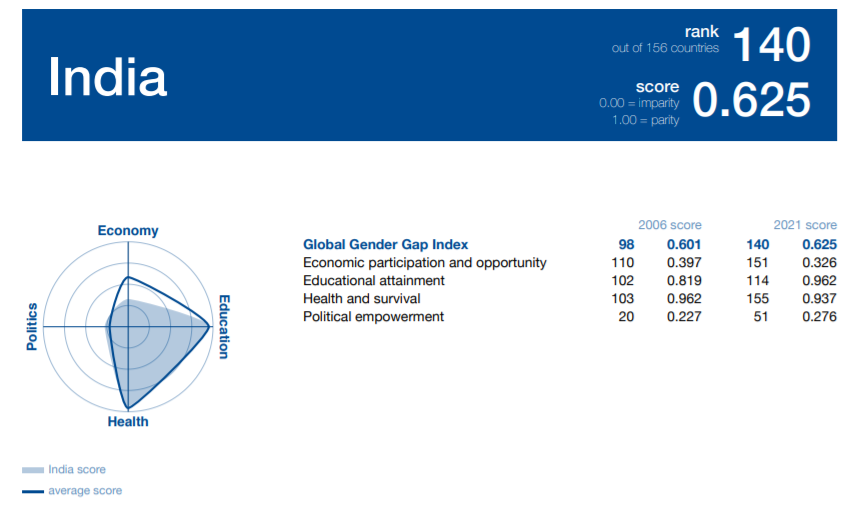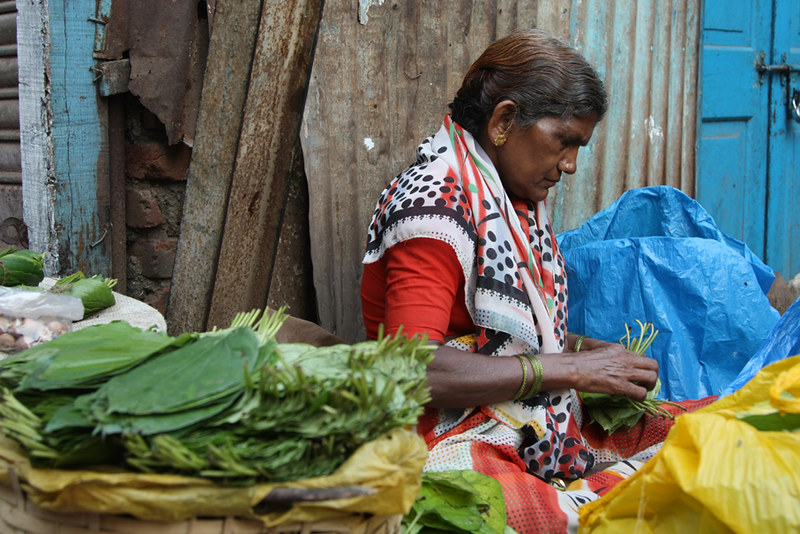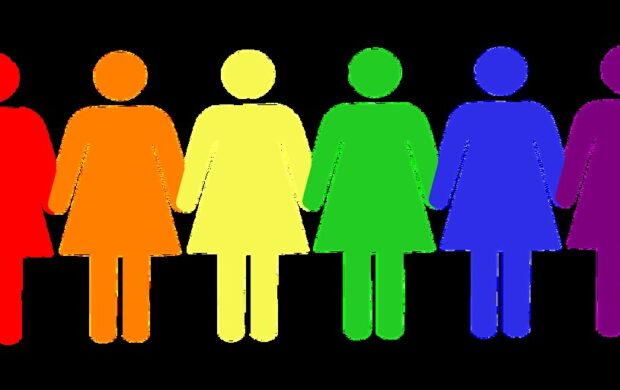Transitions to a new normal because of COVID-19 have resulted in new visions for post-COVID cities. These imaginaries have prioritized sustainable development, new ways of work, and safe mobility systems. However, the discourse around these futures is largely devoid of ways to make cities better places to live for women.
Written by Ashali Bhandari, Transitions Research
Over the last year and a half, urban systems in Indian cities have been stretched to their limits: the national and subsequent local lockdowns have exposed structural inequities in housing, sanitation infrastructure, and livelihoods.
And while urban planners and policymakers are working to address these interconnected challenges and reimagine post-COVID cities, the impact of the pandemic on women is not adequately being considered in these visions for future cities.
Earlier this year, the World Economic Forum (WEF) published their Global Gender Gap Report 2021 and India’s rank fell from 112 to 140 out of 156 countries. The report highlights that the COVID 19 pandemic is likely to exacerbate gender inequality, especially the economic gender gap. However, due to limitations in data availability, the information for India does not capture the full impact of the Pandemic in India. Therefore, it is possible that India’s performance on economic indicators may be worse than the report states
Cities, which are expected to provide 70% of new employment in the country, must be the vanguard of gender equity to ensure sustainable urban transitions. Given the uneven impact of the pandemic on women, it is more urgent than ever that urban decision-makers consider how women access the city to improve female participation in the workforce. Urban planning must address how women access not only livelihoods but also the multitude of services that enable them to fulfill their roles as caregivers. This requires a new framework with which urban systems cater to the needs of women employed in both formal and informal livelihoods through land use and transportation planning.
Key findings from the Global Gender Gap Report 2021
The Global Gender Gap Report benchmarks gender gaps in 156 countries based on four parameters: economic participation and opportunity, educational attainment, health and survival, and political empowerment.
- One of the drivers of India’s lower rank this year is its poor performance in the parameter: economic participation and opportunity.
- Female participation in the labour force fell from 24.8% in 2020 to 22.3% this year and India maintained low scores on indicators like the share of women in professional and technical roles (29.2%) and the share of women in senior and management roles (14.6%).
- India is also one of the world’s poorest performers on wage equality as the report states that “women’s estimated earned income is only one-fifth of men’s”.
COVID-19 is likely to intensify these asymmetries as global trends indicate that women have experienced higher unemployment rates and laggard re-entry into the workforce since the start of the pandemic. Women have also been more likely than men to reduce paid working hours for caregiving responsibilities at home, especially for families with children.

India’s performance in the Global Gender Gap Report
Lessons for a Gender-Sensitive Recovery in Indian Cities:
- Land use planning and mobility systems in Indian cities have not been built to cater to women’s needs. Women are more likely to walk or take public transit to access their workplaces than men, but cities have been designed to prioritize private vehicles. Single-use zoning, where residential commercial, industrial, institutional and recreational areas are kept separate, promotes longer distances while commuting. Studies have shown that this can serve as a deterrent for low-income women to access jobs.
- Furthermore, women tend to engage in trip-chaining, ie. taking multiple sub-trips to get groceries, pick up children from school or take elderly relatives to the doctor, when they go out. Traditional mobility systems, that aim to move people between homes and workplaces, do not cater to the multiplicity of trips that women take. This makes it more time consuming and costly for women to complete the sub-trips and thus makes it challenging for women be able to engage in the workforce.
- Women who are able to engage in income-generating employment outside of the home, are faced with a “double-shift” of caregiving responsibilities in addition to their primary jobs. The pandemic has exacerbated this challenge in Indian cities as caring for children who were schooling remotely and husbands who were working from home became an additional burden for women. This has caused some women to miss deadlines and in some cases reduce working hours. Globally, trends have shown that women have left the workforce and turned down promotions and leadership positions due to their extra responsibilities during the pandemic.
To ensure higher rates of female participation in the workforce, cities must address issues of access, both to the workplace and to other places women frequent to fulfil their roles as caregivers.
- Mixed-use, affordable and walkable neighborhoods reduce the distance between the home and workplace, thus improving access to economic opportunities for women. This also reduces the time taken to complete diverse trips, as important services and establishments are closer to home
- Investments in public transportation and complete streets increase the supply of transportation infrastructure that caters to women, as Indian women are more likely to use public transportation or walk to work. It is important to prioritise creating safe transit infrastructure, with good visibility, street lighting and signage to encourage women to utilise these systems.
- In a post COVID world, transportation infrastructure will also need sanitation and distancing provisions, potentially with partitions between seats and regular deep cleaning. Ticketing systems may also evolve into contactless systems to reduce the spread of the virus. However, provisions for communities without access to digital technologies, especially women who are less likely to own a smartphone than men, will be essential in this transition.
Equitable post COVID futures for Indian cities cannot be reimagined without addressing the needs of low-income communities. In Indian cities, the informal sector provides the vast majority of employment, especially for women. Studies from cities like Ahmedabad, Delhi, and Tiruppur highlight how women who worked in the informal sector were unable to access their livelihoods during and after the 2020 lockdown during the first wave of the pandemic in India. Women from all cities concurred that poor transportation and mobility restrictions increased responsibilities at home and health concerns limited their ability to work. Many of these women have indicated that these barriers continue to impact their access to livelihoods even though lockdowns have ended.
Rethinking Equitable Urban Systems
How can urban planners rethink urban systems to cater to the needs of women? How can we design affordable and connected transportation networks that make it easier for women to access employment opportunities? How can we create affordable housing and do neighborhood-scale planning which explicitly makes it easier for women to fulfill their multiple roles?
The predominant discourse around COVID recovery in Indian and global cities pushes for sustainable development: building resilient infrastructure, devolving local governance, improving financial capacity, and transitioning to a green future. This alone is not sufficient: Indian cities must take an additional step to work towards a gender-equitable future, ensuring women’s equal participation in the workforce and guaranteeing women equal rights to the city
Please join the dialogue to help us imagine more equitable and inclusive urban futures.
If you would like to chat more, please get in touch at ashali@transitionsresearch.org
Transitions Research will shed light on radical transformations that will shape India’s long-term future. Pathways related to four transitions – low carbon and climate-resilient development; smart, sustainable and inclusive urbanization; safe, responsible, and equitable digitalization of society, and food systems that meet the growing demand for food while protecting the environment are complex and uncertain. Our mission is to illuminate pathways that ensure that these transitions are just, feasible and sustainable.
Sources:
- Global Gender Gap Report 2021
- COVID-19 Crisis and the Informal Economy Study
- Gender and (Smart) Mobility
- Women and Transport in Indian Cities
- Handbook for Gender-Inclusive Urban Planning and Design
- Secondary Cities Post COVID-19
- Gendering COVID-19: Impact of the Pandemic on Women’s Burden of Unpaid Work in India
- Why has COVID-19 been especially harmful for working women?
- Cities and Pandemics: Towards a More Just, Green and Healthy Future
- A Tough Call: Understanding barriers to and impacts of women’s mobile phone adoption in India
- India’s Urban Awakening
Essential Reads:
- Why Loiter? Women and Risk on Mumbai Streets by Shilpa Phadke, Sameera Khan and Shilpa Ranade
- Feminist City by Leslie Kern
- Invisible Women by Caroline Criado Perez












Join discussion